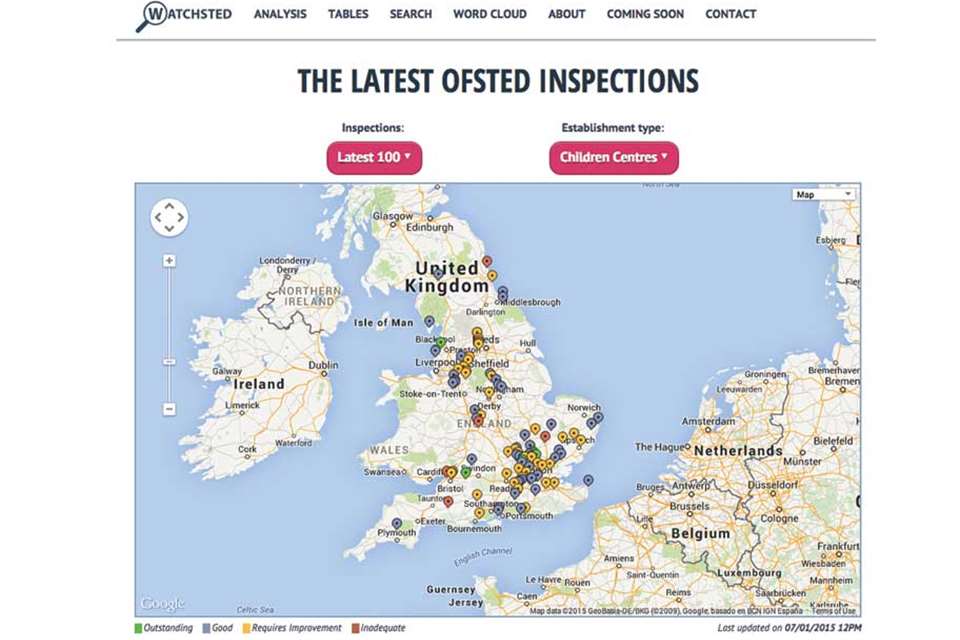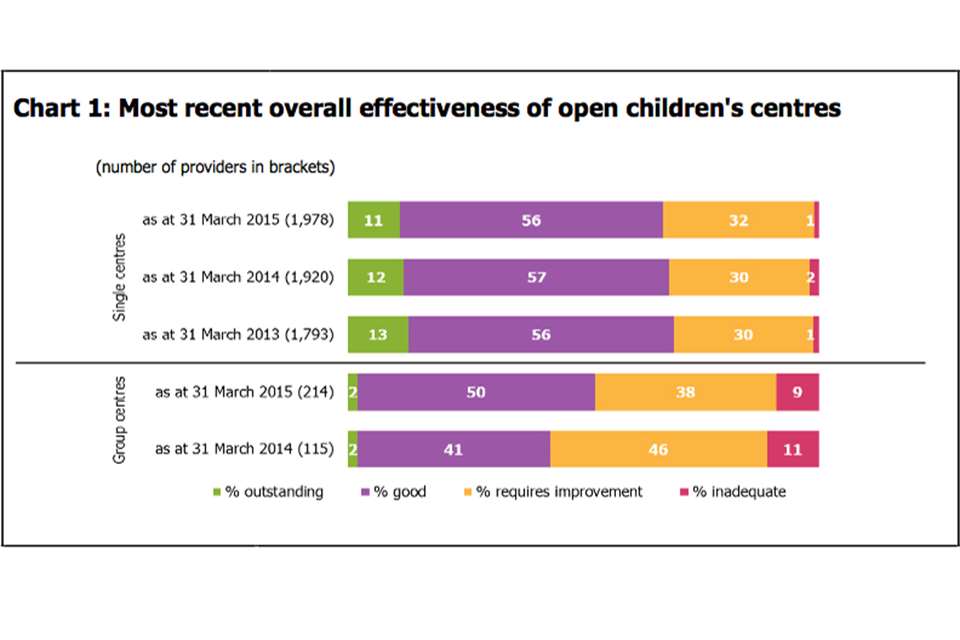Children's centres feel strain of cuts and mergers
Monday, July 13, 2015
Children's centres are under immense pressure as reduced funding and support and the amalgamation of settings has increased their responsibilities and workloads.

The latest reports by the team carrying out the Evaluation of Children's Centres in England (ECCE) reveal that centre staff are being overstretched as they try to juggle providing support to a growing number of vulnerable families while continuing to run open-access services.
Alongside this, reduced local authority budgets have led to cuts in funding for children's centres, affecting opening hours and staffing.
The publication of the reports precede an announcement by the childcare minister Sam Gyimah that the Government is to launch a consultation on children's centres in the autumn.
Writing exclusively for Nursery World, Mr Gyimah said that while their value was obvious, 'the reality is not enough children's centres are "good" or "outstanding", and as a result they aren't helping families in the way they should be. We have to collectively look into why that is the case.'
He also announced plans to work with Ofsted to reform the way children's centres are inspected.
The ECCE is a six-year study commissioned by the Department for Education (DfE) and undertaken by the University of Oxford, NatCen Social Research and Frontier Economics.
The latest three reports, published at the end of June, demonstrate how children's centre services changed between 2011 and 2014.
According to one of the reports, titled Organisation, Services and Reach of Children's Centres, based on a survey of 121 centres, half of staff are dealing with families 'on social workers' books' who have complex needs, but are receiving less support from outside agencies than in the past.
On top of this, children's centre staff feel the training they receive does not prepare them to take on such highly intensive work.
Senior researcher Professor Kathy Slyva, from the University of Oxford's Department of Education, warned that with staff having to provide more outreach to vulnerable families at home, in line with the revised 'core purpose' of children's centres, pressure is being put on universal services, which could lead to their demise. She said that there is a fear that if this happens children's centres could be stigmatised as places just for vulnerable families, which risks those most at need stopping visiting.
In 2013, the Government published updated guidance in which the core mission of children's centres was changed to target more disadvantaged families.
Centre staff who were interviewed by the ECCE team also raised concerns that the loss of open-access services could make it harder to identify families with needs just below the radar of social services.
Merging of centres
The reports go on to highlight how the move towards clustering of children's centres has increased their workloads and responsibilities. According to the research, there was a clear movement between 2011 and 2013 away from the traditional standalone model to models featuring clustering. The move by local authorities is in reaction to reductions to their Government funding.
Findings from a survey of children's centre leaders working in 128 centres carried out by the ECCE team showed that between 2011 and 2013 the number of leaders managing four centres rose from 17 per cent to 28 per cent.
Staff reported that centre reorganisation had resulted in a number of changes to centres and sites, this included the loss of some services due to funding cuts and a reduction to their opening hours.
The research also suggests that lower academically qualified managers are more likely to be in charge at centres with service clustering.
Meanwhile, the number of families visiting centres has increased.
Professor Sylva said, 'While it is cheaper for a local authority to cluster children's centres, standalone centres are of much higher quality than group centres. This is because it is much easier for single centres to run a coherent programme and get to know families.'
According to the latest Ofsted figures (see box), as of 31 March 2015, 47 per cent of group centres were rated as 'requires improvement' or 'inadequate', compared to 33 per cent of single centres.
Users of children's centres
The reports show that disadvantaged families, non-working parents and those with poor mental well-being are bigger users of centres than affluent parents. These families were also more likely to use childcare at their named centre, which the authors speculate is most likely because the settings offered funded twos places.
However, a survey of more than 1,000 parents registered with one of 128 children's centres, carried out as part of the ECCE research, revealed that those with younger rather than older children were more likely to use centres overall.
About a third fewer (54 per cent) parents reported visiting their designated centre when their child was three years old compared to when they were one (85 per cent).
The only services that were used more by parents of three-year-olds were childcare and early education, and speech and language therapy.
Services
The most popular children's centre services, according to the survey of parents, are play and learning groups and midwife or health visitor sessions/clinics; the least popular are relationship support, first aid sessions and basic IT or job skills courses.
Emily Tanner, head of children, families and work at NatCen Social Research, said, 'This survey has provided us with an important insight into the way families are using children's centres and how this changes as their children get older.
'It also gives us an idea of how recent policy changes have affected services offered. Since the survey began, policy changes have shifted with the focus of children's centres towards more disadvantaged families.'
The future of centres
To secure the future of children's centres, Professor Sylva said she would like to see more health involvement. She suggested health visitors be based in centres, especially now they are under local authority control.
She added, 'I hope centres can remain open. Many of the buildings are underused and would make good venues.
'Children's centres would be ready to offer a broader menu of services if there was more funding.'
- A further ECCE report on the impact of children's centres on outcomes for children and families is due later in the year
OFSTED CHILDREN'S CENTRE STATISTICS
The latest figures on children's centre inspections, published at the end of last month, show that while more group centres are being judged 'good' or 'outstanding', nearly half are still below this level.
As of 31 March 2015, 52 per cent of group centres were judged as good or outstanding.
The percentage of standalone children's centres found to be good or outstanding was 67 per cent. While they are outperforming group centres, the results show a slight decline, two percentage points, over the past two years since the latest inspection framework was introduced.
This compares to 85 per cent of childcare providers achieving good or outstanding in their last inspection.








